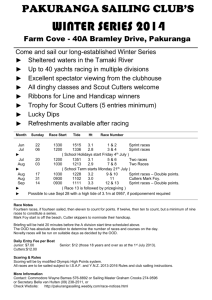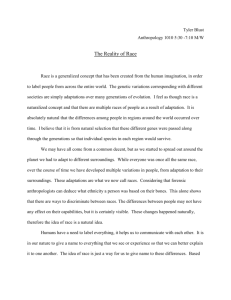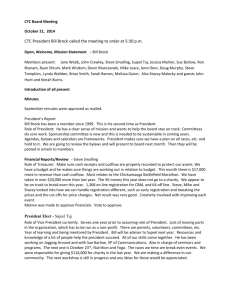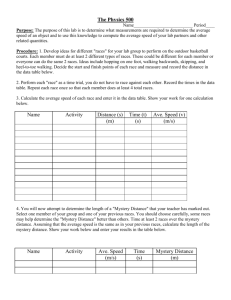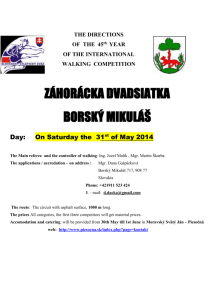002
advertisement
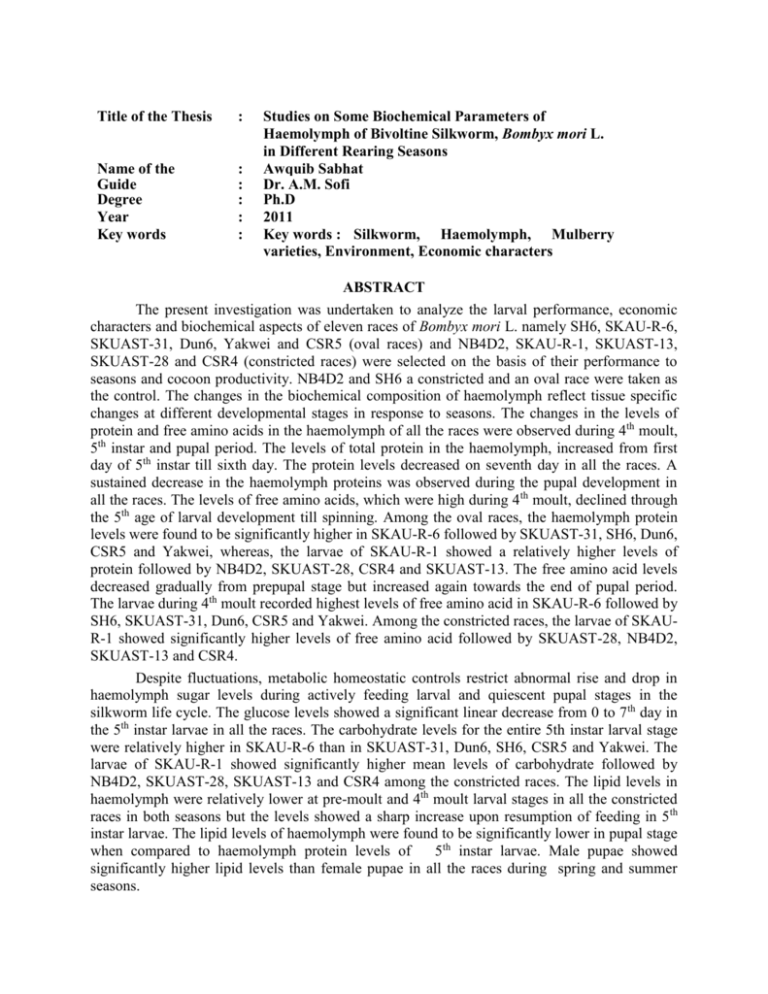
Title of the Thesis : Name of the Guide student Degree Year Key words : : : : : Studies on Some Biochemical Parameters of Haemolymph of Bivoltine Silkworm, Bombyx mori L. in Different Rearing Seasons Awquib Sabhat Dr. A.M. Sofi Ph.D 2011 Key words : Silkworm, Haemolymph, Mulberry varieties, Environment, Economic characters ABSTRACT The present investigation was undertaken to analyze the larval performance, economic characters and biochemical aspects of eleven races of Bombyx mori L. namely SH6, SKAU-R-6, SKUAST-31, Dun6, Yakwei and CSR5 (oval races) and NB4D2, SKAU-R-1, SKUAST-13, SKUAST-28 and CSR4 (constricted races) were selected on the basis of their performance to seasons and cocoon productivity. NB4D2 and SH6 a constricted and an oval race were taken as the control. The changes in the biochemical composition of haemolymph reflect tissue specific changes at different developmental stages in response to seasons. The changes in the levels of protein and free amino acids in the haemolymph of all the races were observed during 4th moult, 5th instar and pupal period. The levels of total protein in the haemolymph, increased from first day of 5th instar till sixth day. The protein levels decreased on seventh day in all the races. A sustained decrease in the haemolymph proteins was observed during the pupal development in all the races. The levels of free amino acids, which were high during 4th moult, declined through the 5th age of larval development till spinning. Among the oval races, the haemolymph protein levels were found to be significantly higher in SKAU-R-6 followed by SKUAST-31, SH6, Dun6, CSR5 and Yakwei, whereas, the larvae of SKAU-R-1 showed a relatively higher levels of protein followed by NB4D2, SKUAST-28, CSR4 and SKUAST-13. The free amino acid levels decreased gradually from prepupal stage but increased again towards the end of pupal period. The larvae during 4th moult recorded highest levels of free amino acid in SKAU-R-6 followed by SH6, SKUAST-31, Dun6, CSR5 and Yakwei. Among the constricted races, the larvae of SKAUR-1 showed significantly higher levels of free amino acid followed by SKUAST-28, NB4D2, SKUAST-13 and CSR4. Despite fluctuations, metabolic homeostatic controls restrict abnormal rise and drop in haemolymph sugar levels during actively feeding larval and quiescent pupal stages in the silkworm life cycle. The glucose levels showed a significant linear decrease from 0 to 7 th day in the 5th instar larvae in all the races. The carbohydrate levels for the entire 5th instar larval stage were relatively higher in SKAU-R-6 than in SKUAST-31, Dun6, SH6, CSR5 and Yakwei. The larvae of SKAU-R-1 showed significantly higher mean levels of carbohydrate followed by NB4D2, SKUAST-28, SKUAST-13 and CSR4 among the constricted races. The lipid levels in haemolymph were relatively lower at pre-moult and 4th moult larval stages in all the constricted races in both seasons but the levels showed a sharp increase upon resumption of feeding in 5th instar larvae. The lipid levels of haemolymph were found to be significantly lower in pupal stage when compared to haemolymph protein levels of 5th instar larvae. Male pupae showed significantly higher lipid levels than female pupae in all the races during spring and summer seasons. The larval weight of oval races irrespective of seasons was found to be significantly higher in SKAU-R-6 followed by SKUAST-31, SH6, Doon6, CSR5 and Yakwei. Among the constricted races, the larval weight was significantly higher in SKAU-R-1 followed by NB4D2, SKUAST-28, SKUAST-13 and CSR4. The effective rate of rearing (ERR) of all the races was found to be significantly higher during spring than in summer season. Among the oval races of silkworm, the ERR was higher in SKAU-R-6 followed by SKUAST-31, SH6, Dun6, Yakwei, and CSR5. The ERR was significantly higher in SKAU-R-1 followed by NB4D2, SKUAST-28, SKUAST-13 and CSR4 among the constricted races. Te cocoon weight among the oval races was found to be significantly higher in SKUAST-31 followed by SKAU-R-6, SH6, Dun6, CSR5 and Yakwei. The cocoon weight of all the constricted races was found to be significantly higher in NB4D2, followed by SKUAST-28, SKAU-R-1, SKUAST-13 and CSR-4. In SKAU-R-6, significantly higher increase in shell weight was observed followed by SKUAST-31, SKAU-R-6, SH6, Dun6, Yakwei and CSR5. Among the constricted races, the shell weight was found to be significantly higher in SKAU-R-1 followed by SKUAST-28, NB4D2, SKUAST-13 and CSR4. The filament length among the oval races was relatively higher in SKAU-R-6 followed by SKUAST-31, SH6, Dun6, Yakwei and CSR5. The levels of the biochemical constituents in haemolymph such as protein, free amino acid, glucose, carbohydrate and lipids also varied significantly when the three selected silkworm races viz. SKAU-R-1, SH6 and NB4D2 were reared on different varieties of mulberry namely Ichinose (control), Goshoerami (uniformly the best), and Kokuso-20 (least productive). The free amino acid, protein and carbohydrate content in the leaf of these three varieties were found to be higher in spring than in summer season. Furthermore, significant changes in the biochemical constituents were also observed in the same variety at different maturity levels and seasons. The free amino acid and protein levels of all the maturity levels of the leaf were highest in Goshoerami variety followed by Ichinose and Kokuso-20. The free amino acid and protein levels in all the three varieties were relatively high in tender leaf followed by medium and coarse leaf. The protein levels in the larvae fed with Goshoerami variety were relatively higher than the levels of protein in the larvae fed with Ichinose and Kokuso-20. A significant increase in the haemolymph proteins, free amino acids, glucose, carbohydrates and lipids were observed in SKAU-R-1 fed on Goshoerami followed by Ichinose and Kokuso-20. There was a significant decrease in haemolymph biochemical constituents in all the races during both seasons in the order of Kokuso-20> Ichinose> Goshoerami. A significant increase in the larval weight was observed in SKAU-R-1, NB4D2 and SH6 on Goshoerami variety followed by Ichinose and Kokuso-20 during spring and summer season. Irrespective of the seasons, the ERR of all the races was higher on Goshoerami followed by Ichinose and Kokuso-20. The highest ERR was observed in SKAU-R-1 followed by NB4D2 and SH6. The mean pupation rate of all the races was relatively higher on Goshoerami variety than on Ichinose and Kokuso-20. The larvae of SKAU-R-1 showed a maximum mean pupation rate followed by NB4D2 and SH6. Also, the cocoon and post-cocoon parameters of all the three silkworm races were relatively more on Goshoerami variety followed by Ichinose and Kokuso-20. The results of the present investigation demonstrate changes in the levels of protein, free amino acid, glucose, total carbohydrate and lipids in haemolymph of oval and constricted races. The changes in the chemical composition of haemolymph reflect tissue specific changes in different developmental stages and in response to seasons in the races of Bombyx mori under study and revealed that, SKAU-R-6, SKUAST-31, SH6, NB4D2, SKAU-R-1 and SKUAST-28 displayed better physiological compensatory mechanisms in response to exposure to higher temperatures and, therefore, are more suitable for rearing in summer season of Kashmir in addition to spring season than the productive CSR4, CSR5, Dun6 and Yakwei races which have poor ability of acclimation to higher temperature. All these races qualify for higher cocoon productivity with superior economic parameter for spring as well as summer seasons of Kashmir.
